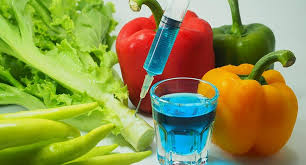Foods can become contaminated by micro-organisms (bacteria and viruses) from various sources during food preparation and storage.
Cross-contamination is a common cause of foodborne illness. Preventing cross-contamination helps reduce the risk of foodborne illnesses. It is crucial to protect food from contamination to prevent food poisoning and the introduction of foreign objects.
Adulteration is the act of deliberately making a commodity impure by mixing it with other or inferior ingredients. This admixture can alter the nature of the original to the extent of destroying its identity or simply lowering the value or effectiveness of the final product.
The adulteration of foods and beverages is often carried out to increase profits for the manufacturer or merchant. This act is designed to defraud consumers, but it can also pose significant health risks.
Food Contamination and Its Causes

There are three main ways in which food can become contaminated: bacterial, physical, and chemical contamination.
1. Bacterial Contamination
When food is contaminated by harmful bacteria (pathogenic bacteria) or their toxins, food poisoning may occur. Bacteria are the primary cause of food poisoning, with symptoms such as vomiting, diarrhea, fever, and abdominal pain.
The time it takes for symptoms to appear depends on the type of bacteria. Bacteria must grow in the food to reach numbers sufficient to infect the body, multiply in the intestine, and cause illness. Alternatively, toxins may form in the food or in the intestine, leading to symptoms soon after ingestion.
It’s important to remember that food contaminated with pathogenic bacteria often looks, tastes, and smells normal. Therefore, precautions must be taken to prevent the growth of bacteria in food to levels that can cause food poisoning.
Read Also: 5 Amazing Health Benefits of Triphala (Three fruits)
Control of Bacterial Contamination

i. Prevent cross-contamination: This occurs when bacteria are transferred to food, either directly (e.g., raw and cooked foods coming into direct contact or sneezing and coughing on food) or indirectly (e.g., via utensils, pests, or unclean hands).
ii. Separate raw and cooked foods: Store prepared and cooked foods separately from raw foods and unprepared vegetables. If separation is not possible, raw food and vegetables should be stored at the base of the refrigerator.
iii. Maintain cleanliness: Keep food preparation areas and utensils clean. Wash hands frequently, especially after using the toilet, handling raw food, or performing tasks such as blowing your nose or combing your hair.
Bacteria require food, warmth, moisture, and time to multiply. By removing one or more of these conditions, bacterial growth can be slowed or stopped. Foods should be stored at safe temperatures (below 8°C for cold and above 63°C for hot), cooked thoroughly, and not kept at room temperature longer than necessary.
2. Physical Contamination
Physical contamination can occur at any point in the food chain. Examples include pieces of machinery that may fall into food during production, or foreign objects like stones, bones, or twigs. Manufacturers often install metal detectors on production lines to prevent this type of contamination. Food handlers must also take precautions, such as avoiding jewelry in food preparation areas, to prevent contamination.
3. Chemical Contamination
Chemicals, including pesticides, bleach, and cleaning agents, can contaminate food if not used carefully. For example, cleaning fluids should be stored separately from food to prevent accidental contamination.
Toxicity of Heavy Metals
The toxicity of heavy metals varies, with zinc being the least toxic, followed by cadmium and mercury. Zinc can be tolerated by the human body in small amounts, but excessive zinc consumption can cause vomiting.
Cadmium is highly toxic and soluble in the organic acids found in food, potentially leading to serious poisoning and respiratory issues. Mercury is extremely toxic, and stringent precautions are needed to prevent exposure.
Read Also: How Guava Fruits and Leaves Improve Female Fertility
Cross-Contamination of Food

Cross-contamination is the transfer of harmful bacteria from one source to another. It can occur through three main channels: food-to-food, equipment/utensil-to-food, and people-to-food.
1. Food to Food: This type of contamination occurs when bacteria from one food, especially raw food, comes into contact with cooked food. For example, raw meat drippings in a refrigerator can contaminate cooked vegetables.
2. People to Food: People can transfer bacteria to food by handling it improperly. Examples include handling food after using the toilet without washing hands or using the same cloth to wipe down surfaces and hands.
3. Equipment to Food: Bacteria can be transferred from improperly cleaned kitchen utensils or equipment. For instance, using a knife or cutting board for raw chicken and then preparing salad without cleaning them properly can lead to contamination.
Preventing Cross-Contamination
- Wash hands thoroughly between handling different types of food.
- Clean and sanitize all equipment and utensils after each use.
- Store marinating meat in a covered dish in the cooler.
- Avoid bare-hand contact with ready-to-eat foods.
- Store food properly, separating raw and cooked products.
Prevention of Contamination in Field Produce
Field produce must be handled, stored, and transported following proper hygiene and safety practices to minimize the risk of contamination.
Do you have any questions, suggestions, or contributions? If so, please feel free to use the comment box below to share your thoughts. We also encourage you to kindly share this information with others who might benefit from it. Since we can’t reach everyone at once, we truly appreciate your help in spreading the word. Thank you so much for your support and for sharing!
Read Also: The Effect of Solid Waste on Business Environments
Frequently Asked Questions
We will update this section soon.

